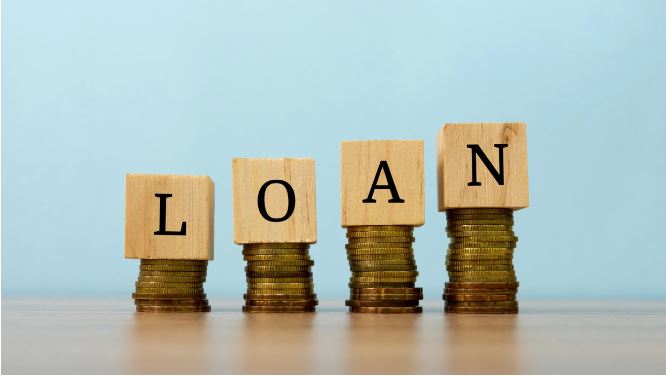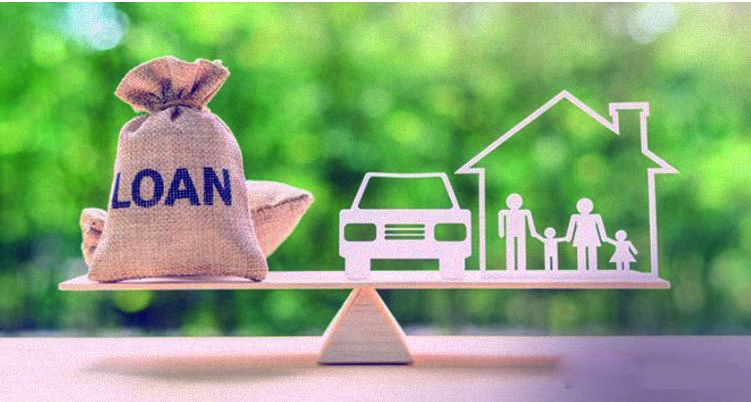Loan: Introduction, Types, Components, and Process!
“A loan is a type of financial instrument where one party borrows money from another. Examples of loans include mortgage loans, credit card debt, personal loans, and lines of credit.”
What is Loan?
A loan is a type of credit agreement where one party lends a certain amount of money to another party, with the understanding that the borrowed amount will be repaid in the future, along with any interest or finance charges added by the lender.
Loans can be for a fixed amount or offered as a revolving line of credit with a maximum limit. There are several types of loans, such as secured, unsecured, commercial, and personal loans.

Loan in Bullet forms:
- A loan involves the lending of money in exchange for repayment of the principal amount plus interest.
- Lenders typically evaluate a prospective borrower’s income, credit score, and existing debt levels before deciding whether to offer a loan.
- Loans may be secured by collateral, such as a mortgage, or unsecured, as with credit cards.
- Revolving loans or lines of credit allow for spending, repayment, and re-borrowing, while term loans feature fixed rates and payments.
- Borrowers deemed higher risk may face higher interest rates from lenders.
Understanding About The Loan
A loan is a type of debt that can be taken on by an individual or entity. The lender providing the loan is typically a corporation, financial institution, or government entity that advances a sum of money to the borrower. As a condition of receiving the loan, the borrower consents to a particular set of terms, which may include finance charges, interest rates, repayment deadlines, and other provisions.
Depending on the loan and the lender, collateral may be required to secure the loan and ensure its repayment. This can take the form of an asset, such as a car or a home, that the lender can seize if the borrower fails to repay the loan. Loans can also be issued in the form of bonds or certificates of deposit, which offer investors a way to earn a return on their investment while providing the borrower with the funds they need.

Process of the Loan:
- When an individual requires funds, they can request a loan from a variety of sources, including financial institutions, corporations, governments, and other entities. The lender usually asks the borrower to provide certain information, such as the purpose of the loan, their financial background, Social Security Number; SSN, and any other pertinent details.
- The lender reviews this information, including the borrower’s debt-to-income (DTI) ratio, to determine whether the loan can be repaid. Based on the applicant’s creditworthiness, the lender either approves or denies the application. If the application is denied, the lender is required to provide a reason for the denial.
- If the loan application is approved, both parties sign a contract that outlines the details of the agreement. The lender disburses the loan amount to the borrower, and subsequently, the borrower is required to repay the borrowed amount, in addition to any associated fees such as interest.
- Agreement on the terms of a loan occurs between the lender and borrower prior to the disbursement of any money or property. If the lender requires collateral, this will be outlined in the loan documents. many loans include provisions related to the maximum amount of interest that can be charged, as well as other conditions such as the repayment period.
Why Loans are Used?
Loans are used for a variety of reasons, including making major purchases, investing, financing renovations, consolidating debt, and starting or expanding a business. Loans are also an important tool for existing companies to expand their operations.
In addition to providing individuals and businesses with needed funds, loans can help to stimulate economic growth by increasing the overall money supply and fostering competition by lending to new businesses.
The interest and fees charged on loans represent a significant source of revenue for many banks, as well as some retailers who offer credit facilities and credit cards.

Loan Components
A loan comprises various components that determine its size, repayment duration, and interest rate. These components include:
- Principal: This refers to the initial amount of money that is borrowed from the lender.
- Loan Term: This is the duration of time that the borrower has to repay the loan in full, including any interest or fees.
- Interest Rate: This is the percentage rate at which the lender charges interest on the borrowed amount. Typically, it is presented as an Annual Percentage Rate (APR).
- Loan Payments: This is the amount of money that the borrower must pay on a regular basis, usually monthly or weekly, to repay the loan. The loan payments can be calculated using an amortization table based on the principal, loan term, and interest rate.
In addition to these components, lenders may also charge various fees such as origination fees, servicing fees, or late payment fees. For larger loans, lenders may require collateral, such as real estate or a vehicle. In case the borrower fails to repay the loan, the lender may seize the assets used as collateral to pay off the remaining debt.

Tips for Obtaining a Loan
To be approved for a loan, potential borrowers must demonstrate their ability and financial responsibility to repay the lender. Here are some of the factors that lenders take into account when deciding whether to lend money to a borrower:
- Income: For larger loans, lenders may require a minimum income threshold to ensure that the borrower will be able to make the payments. Lenders may also require a certain number of years of consistent employment, particularly for home mortgages.
- Credit Score: A credit score is a numerical representation of a person’s creditworthiness based on their borrowing and repayment history. Failing to make payments on time and declaring bankruptcy can have a significant negative impact on an individual’s credit score.
- Debt-to-Income Ratio: In addition to income, lenders also examine a borrower’s credit history to see how many loans they currently have. A high level of debt suggests that the borrower may have difficulty repaying their debts.
To increase the likelihood of qualifying for a loan, it’s important to show that you can manage debt responsibly. Make your loan and credit card payments on time, and avoid acquiring any unnecessary debt. This can also help you obtain lower interest rates.
If you have a lot of debt or a poor credit score, you may still be eligible for a loan, but you may have to pay higher interest rates. As these loans can result in significantly higher costs over time, it is advisable to focus on improving your credit score and reducing your debt-to-income ratio.

Relations Between Loans and Interest Rates:
Interest rates have a significant impact on loans and the total cost to the borrower. Loans with higher interest rates result in higher monthly payments, or they take longer to pay off, compared to loans with lower interest rates. For example, let’s say an individual takes out a five-year installment or term loan for $5,000 with an interest rate of 4.5%. In this case, the borrower would need to make a monthly payment of $93.22 for the next five years to pay off the loan. However, if the interest rate is 9%, the monthly payment would increase to $103.79.
If an individual pays $200 per month on a $10,000 credit card balance with a 6% interest rate, it would take them approximately 58 months to pay off the balance. If the interest rate on the credit card balance is raised to 20%, even with the same balance and monthly payment of $200, it will take around 108 months or nine years to fully repay the card.

Types of the Loans
There are several types of loans available, each with its own unique features and requirements. Some of the main types of loans are:
1. Secured vs. Unsecured Loans
Secured loans are those that require collateral, such as a home or car, to secure the loan. If the borrower defaults on the loan, the lender has the right to seize the collateral to make up for the unpaid loan amount. Secured loans, such as mortgages and car loans, are types of loans that require collateral to be pledged by the borrower.
Unsecured loans, in contrast to secured loans, don’t require any collateral to be put up by the borrower. These loans are generally granted based on the borrower’s creditworthiness and ability to repay the loan. Personal loans and credit cards are typical examples of unsecured loans.
2. Revolving vs. Term Loans
Revolving loans allow borrowers to borrow and repay funds as needed, up to a set credit limit. Credit cards and home equity lines of credit (HELOCs) are examples of revolving loans.
Term loans, on the other hand, are repaid in regular, fixed payments over a set period of time. Car loans and Mortgages are typical examples of term loans. Signature loans are also a type of term loan, but they are unsecured and typically have higher interest rates than secured term loans.
Understanding the differences between these types of loans can help borrowers choose the best option for their needs and financial situation.

Simple Interest V/S Compound Interest:
Loans can have either a simple or compound interest rate, which affects the total amount of interest paid by the borrower. Simple interest is calculated only on the principal loan amount and is rarely used by banks. For example, if someone borrows $300,000 at a simple interest rate of 15% per year, they will owe the bank $345,000 ($300,000 + $45,000 in interest).
Compound interest, conversely, refers to the interest charged not only on the principal loan amount but also on any accrued interest from prior periods. This means that borrowers end up paying more in interest over time. For instance, at the end of the first year, the borrower owes the principal plus interest for that year. At the end of the second year, the borrower owes the principal, plus the interest from the first year, and interest on the interest from the first year.

With compound interest, the interest owed can be significantly higher than that of the simple interest method, especially for longer-term loans. One reason compound interest can accumulate quickly is that interest is charged monthly on both the principal loan amount and any interest that has already accrued from previous months. As the lending period increases, the difference between simple and compound interest calculations becomes more pronounced.
Read Also: What is Mortgage Advice?
To Know more about it: Click Here!











